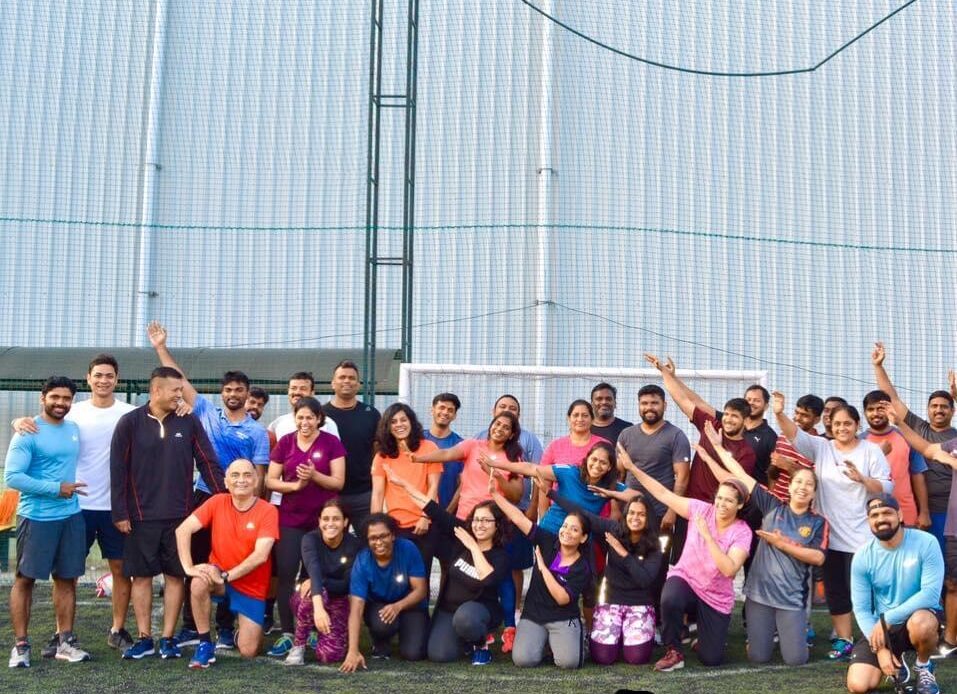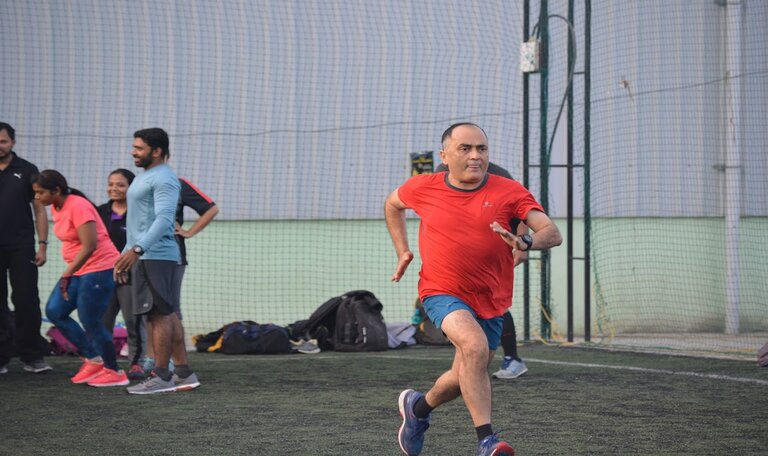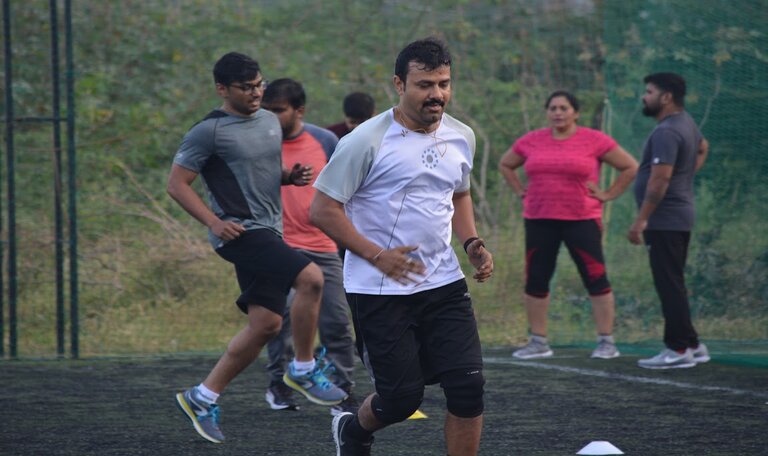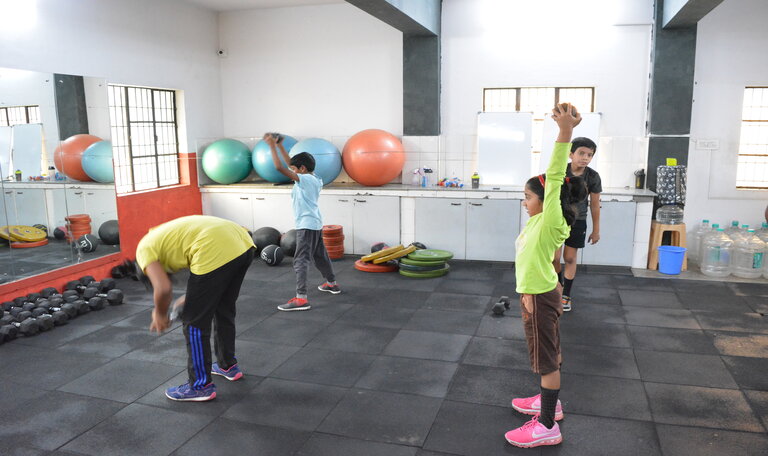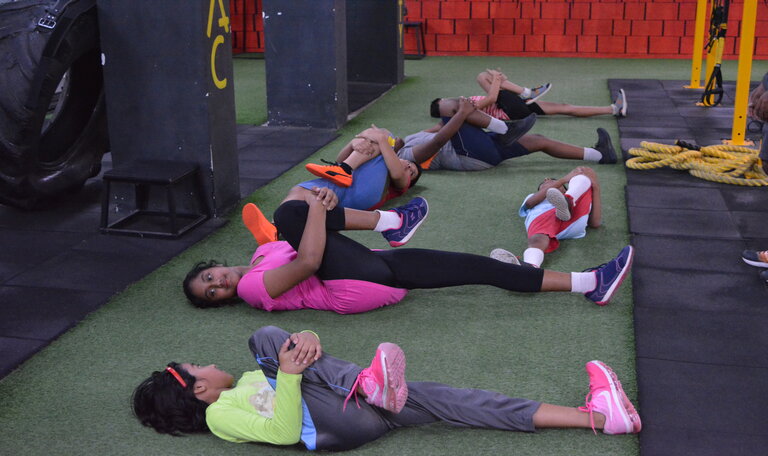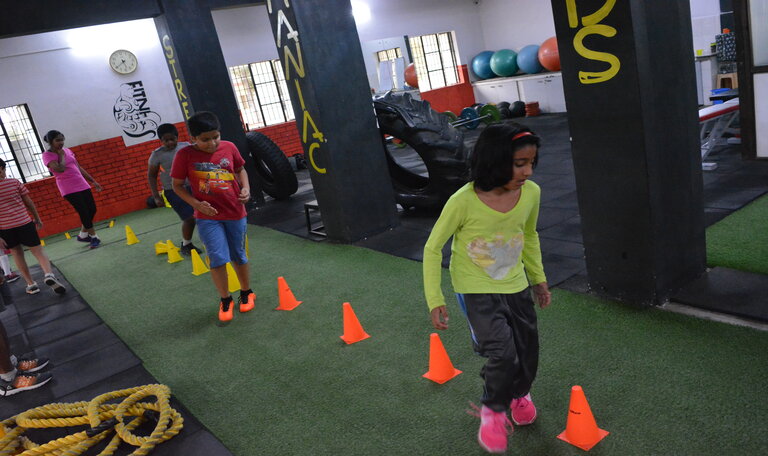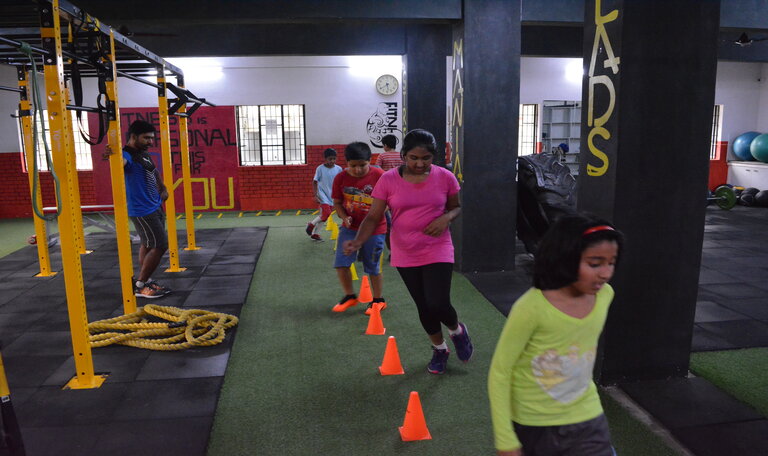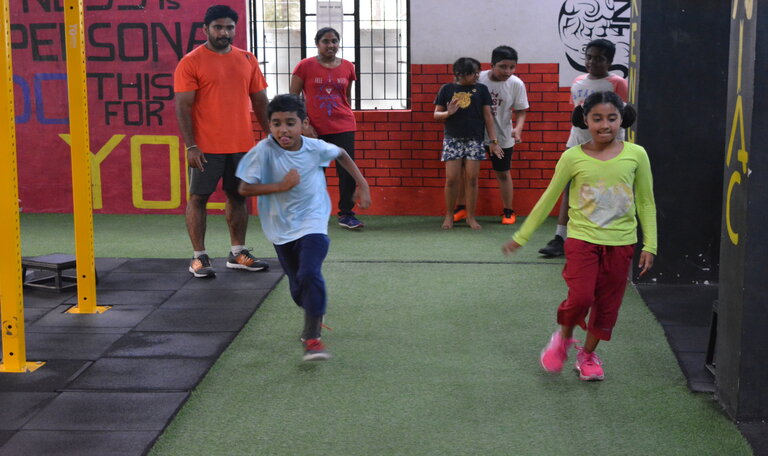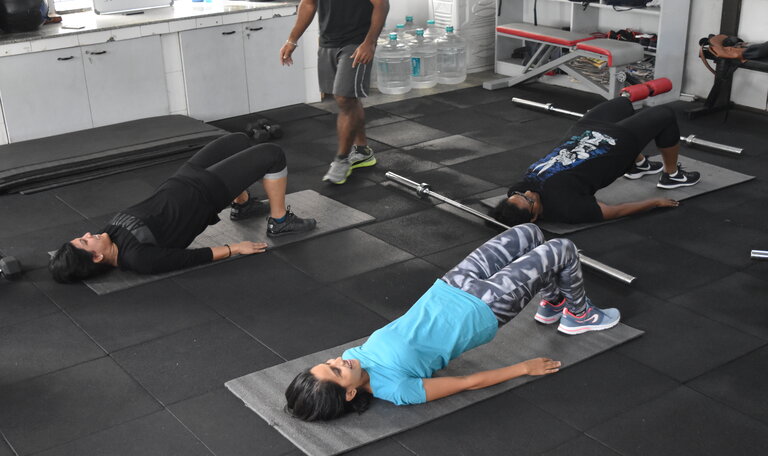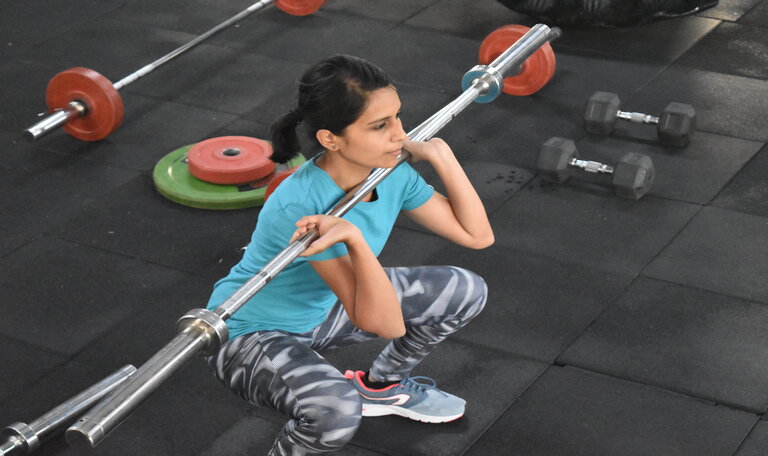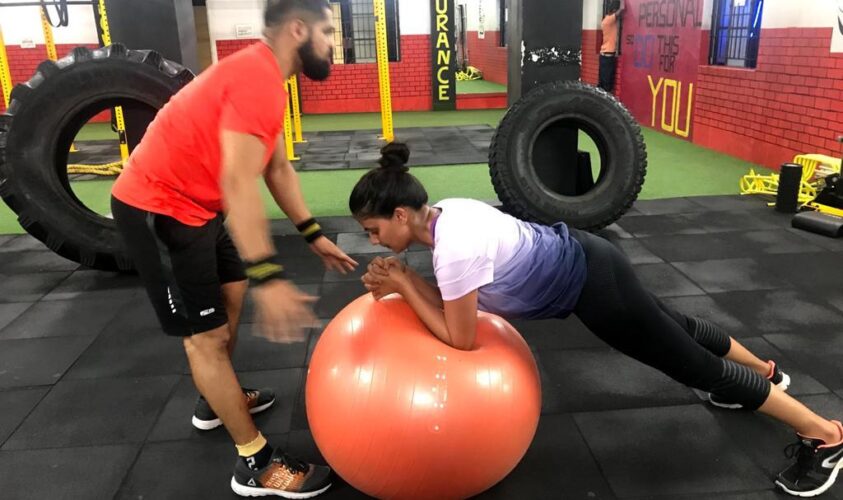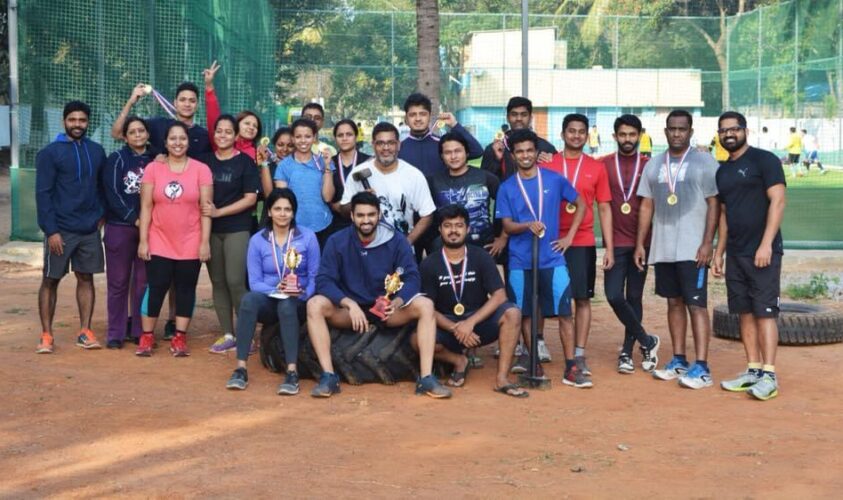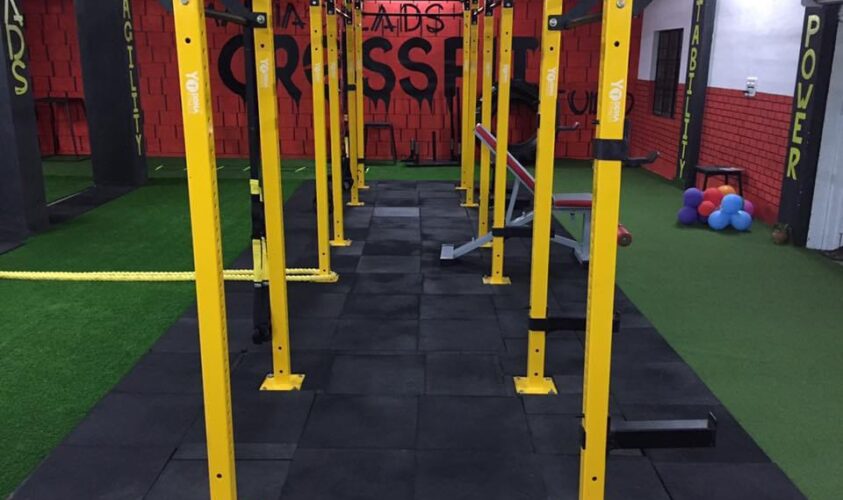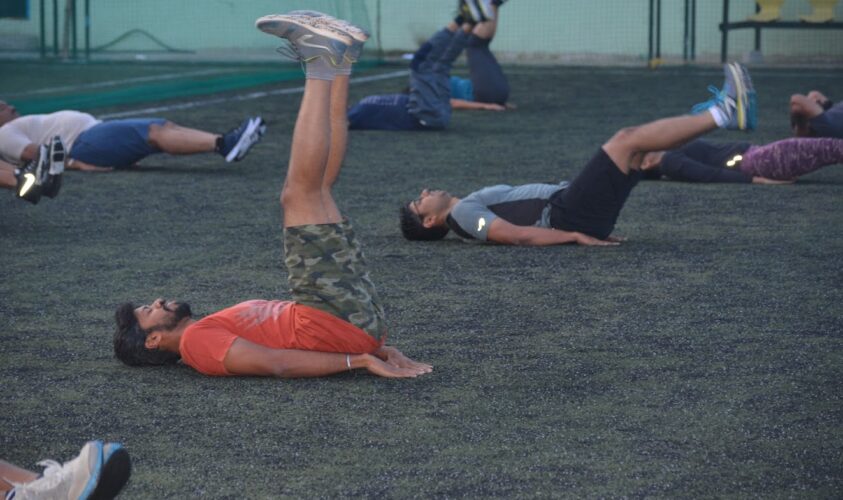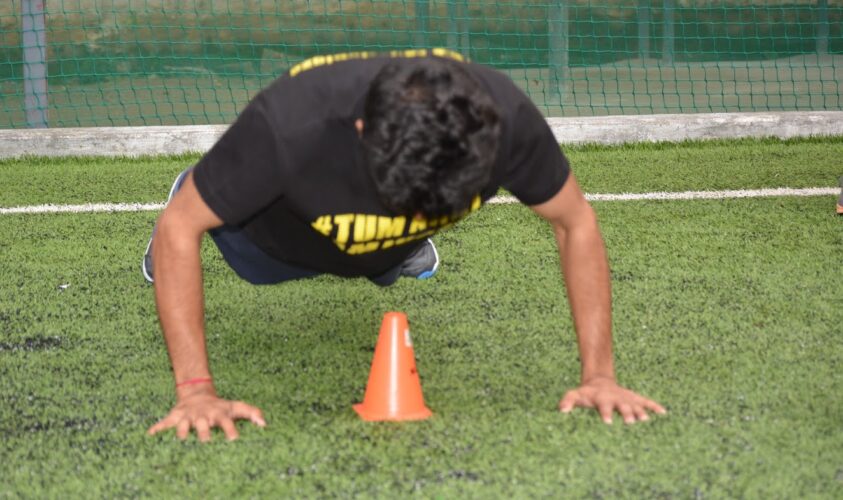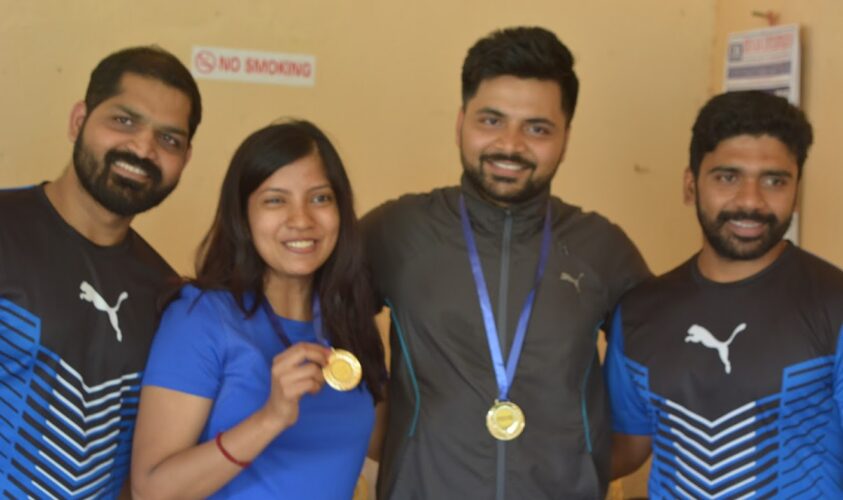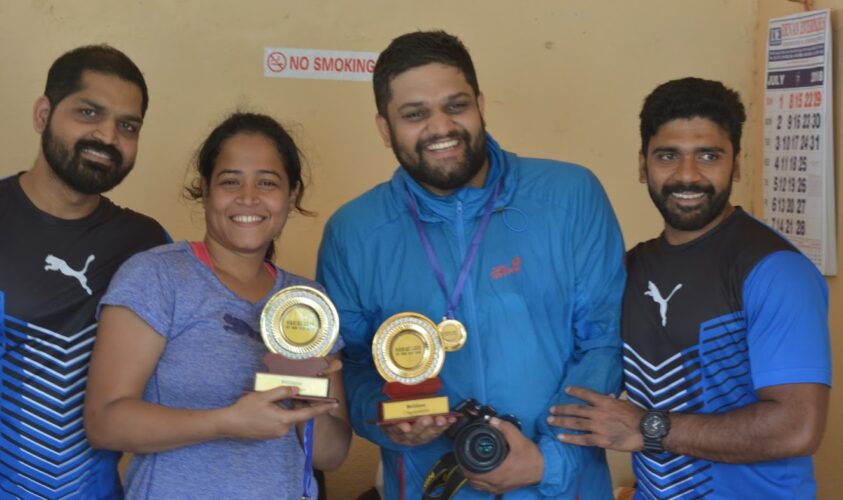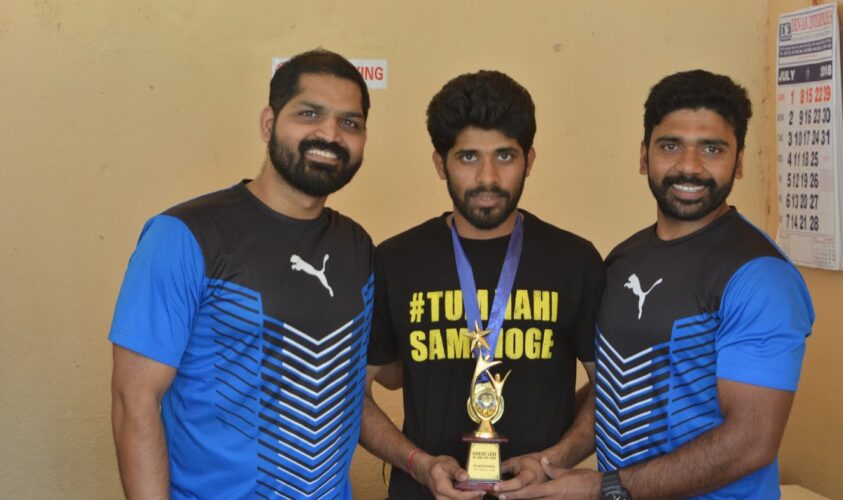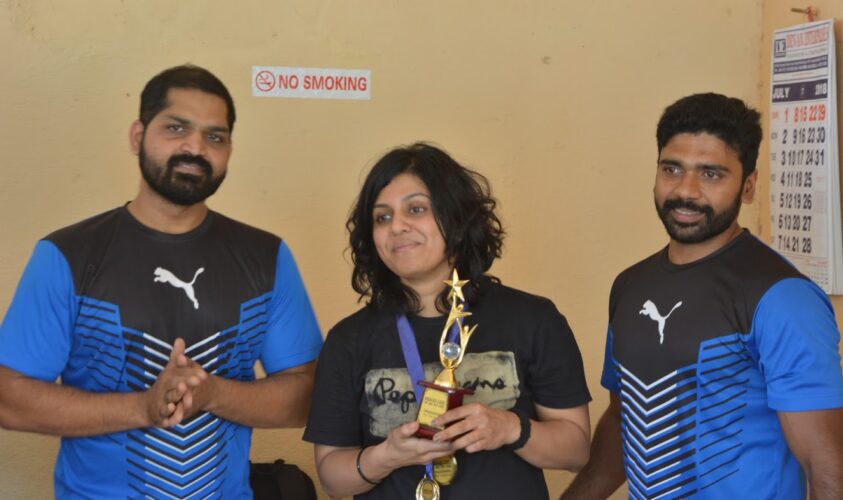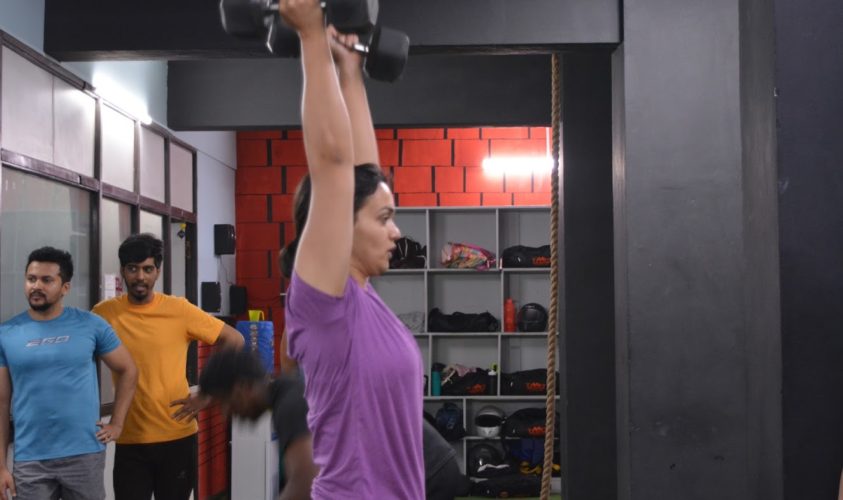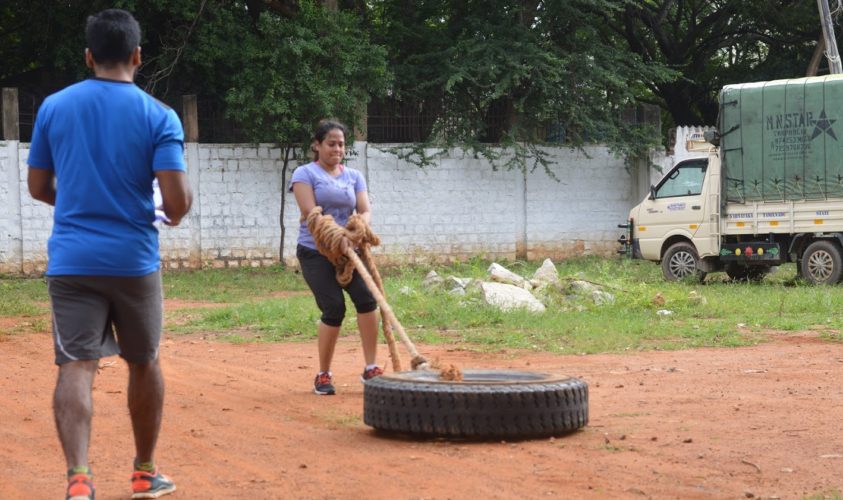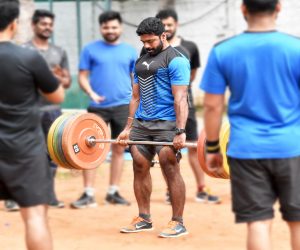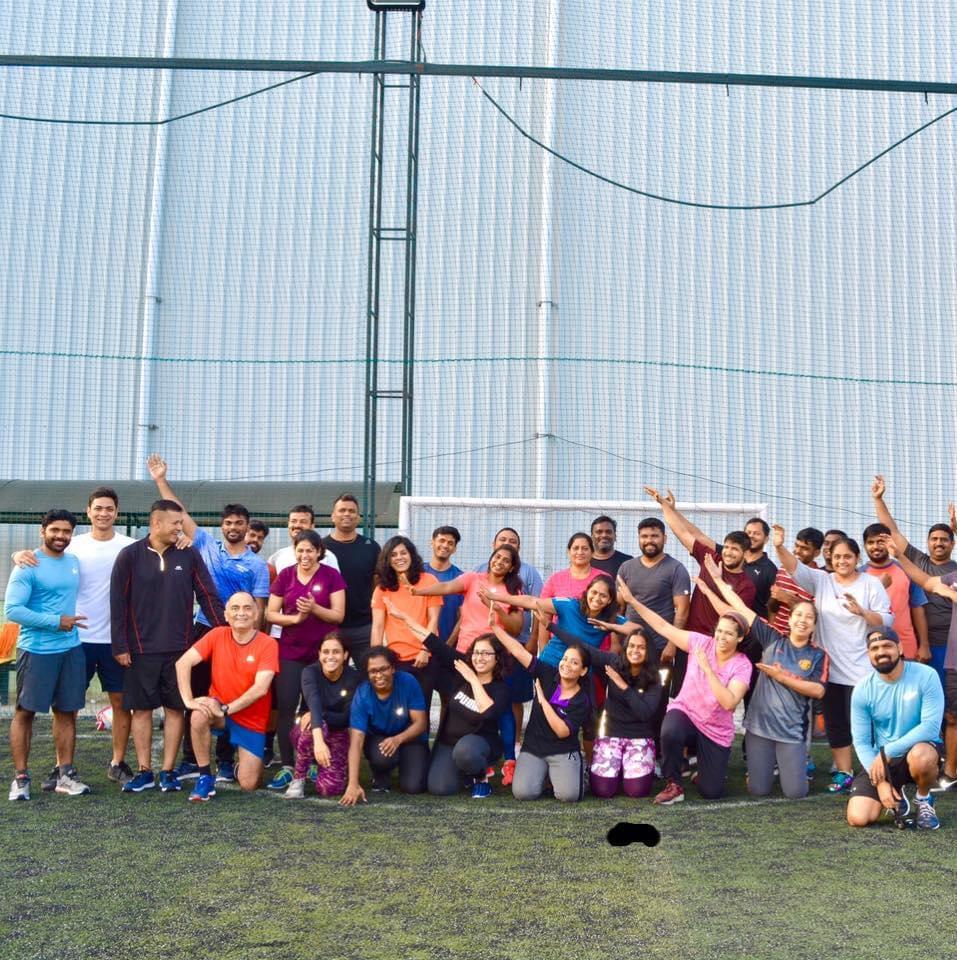
Maniac Lads
About UsManiac Lads aims to equip each individual with the knowledge and confidence to live an active, strong and healthy life. It provides Cross Training and Functional Training depending upon the need and requirement of every individual.
Maniac Lads offers members quality coaching, a diverse class offering and an inclusive community driven environment. Our training programme is accessible to everyone and offers members a chance to progress in every single session.



Training Programs
Train with Expertsworking hours and classes
Find Your Time- All Events
- CrossFit
- Resistance Training / Strength & Conditioning
- Functional Training
- Cardio Grill
- Open Gym / Kick Boxing / Calisthenics
| Monday | Tuesday | Wednesday | Thursday | Friday | Saturday | |
|---|---|---|---|---|---|---|
| 6:00 am |
CrossFit
- |
CrossFit
- |
||||
| 7:00 am |
CrossFit
- |
CrossFit
- |
||||
| 8:00 am |
CrossFit
- |
CrossFit
- |
||||
| 9:00 am | ||||||
| 10:00 am |
CrossFit
- |
CrossFit
- |
||||
| 11:00 am |
CrossFit
- |
CrossFit
- |
||||
| 6:00 pm |
CrossFit
- |
CrossFit
- |
||||
| 7:00 pm |
CrossFit
- |
CrossFit
- |
||||
| 8:00 pm |
CrossFit
- |
CrossFit
- |
| Monday | Tuesday | Wednesday | Thursday | Friday | Saturday | |
|---|---|---|---|---|---|---|
| 6:00 am |
CrossFit
- |
CrossFit
- |
||||
| 7:00 am |
CrossFit
- |
CrossFit
- |
||||
| 8:00 am |
CrossFit
- |
CrossFit
- |
||||
| 9:00 am | ||||||
| 10:00 am |
CrossFit
- |
CrossFit
- |
||||
| 11:00 am |
CrossFit
- |
CrossFit
- |
||||
| 6:00 pm |
CrossFit
- |
CrossFit
- |
||||
| 7:00 pm |
CrossFit
- |
CrossFit
- |
||||
| 8:00 pm |
CrossFit
- |
CrossFit
- |
| Monday | Tuesday | Wednesday | Thursday | Friday | Saturday | |
|---|---|---|---|---|---|---|
| 6:00 am | ||||||
| 7:00 am | ||||||
| 8:00 am | ||||||
| 9:00 am | ||||||
| 10:00 am | ||||||
| 11:00 am | ||||||
| 6:00 pm | ||||||
| 7:00 pm | ||||||
| 8:00 pm |
| Monday | Tuesday | Wednesday | Thursday | Friday | Saturday | |
|---|---|---|---|---|---|---|
| 6:00 am | ||||||
| 7:00 am | ||||||
| 8:00 am | ||||||
| 9:00 am | ||||||
| 10:00 am | ||||||
| 11:00 am | ||||||
| 6:00 pm | ||||||
| 7:00 pm | ||||||
| 8:00 pm |
| Monday | Tuesday | Wednesday | Thursday | Friday | Saturday | |
|---|---|---|---|---|---|---|
| 6:00 am | ||||||
| 7:00 am | ||||||
| 8:00 am | ||||||
| 9:00 am | ||||||
| 10:00 am | ||||||
| 11:00 am | ||||||
| 6:00 pm | ||||||
| 7:00 pm | ||||||
| 8:00 pm |
| Monday | Tuesday | Wednesday | Thursday | Friday | Saturday | |
|---|---|---|---|---|---|---|
| 6:00 am | ||||||
| 7:00 am | ||||||
| 8:00 am | ||||||
| 9:00 am | ||||||
| 10:00 am | ||||||
| 11:00 am | ||||||
| 6:00 pm | ||||||
| 7:00 pm | ||||||
| 8:00 pm |
Tuesday
-
Resistance Training / Strength & Conditioning
-
-
Resistance Training / Strength & Conditioning
-
-
Resistance Training / Strength & Conditioning
-
-
Resistance Training / Strength & Conditioning
-
-
Resistance Training / Strength & Conditioning
-
-
Resistance Training / Strength & Conditioning
-
-
Resistance Training / Strength & Conditioning
-
-
Resistance Training / Strength & Conditioning
-
Thursday
Friday
Saturday
-
Open Gym / Kick Boxing / Calisthenics
-
-
Open Gym / Kick Boxing / Calisthenics
-
-
Open Gym / Kick Boxing / Calisthenics
-
-
Open Gym / Kick Boxing / Calisthenics
-
-
Open Gym / Kick Boxing / Calisthenics
-
-
Open Gym / Kick Boxing / Calisthenics
-
-
Open Gym / Kick Boxing / Calisthenics
-
-
Open Gym / Kick Boxing / Calisthenics
-
THE CREATORS
TRAIN WITH EXPERTS
Asit Kumar Singh
(Co-Founder)
Asit has been to sports since Childhood, Fitness has always been an integral part of his life. As a sportsperson he has represented various Junior States and Universities Level. He has started coaching kids in various sports academies. His passion & dedication for Fitness has always pushed him to excel in his Coaching/ Trainings every single day. He has been persistent from the very beginning of his career to learn about the human anatomy and help people stay fit without being injured. To educate the benefits of right kind of Exercise and Nutrition and build a healthier community, has pushed him to get certification from reputed institutes; Certification on Strength and Conditioning, Certificate on Olympic weightlifting and Nutrition. Having more than 15 years of experience in this field, he provides a cutting-edge health and fitness system to his clients that has helped them in their transformation at exceptional levels.
He along with his team, has completed 4 years successfully serving & helping clients (approx. 2550+, age group 6-76). “Fitness is more than Reps, Sets, Volume, and Intensity. It’s a life-changing transformation of the Mind and Body”

Debasis Dhal
(Co-Founder)
He started his journey in this Fitness World by being one of the active, enthusiast individual who followed with utmost discipline his trainings, his workout regimes and his “Trainer” advices. His passion for sports/exercise developed early, earning state level award on Poll Volt, few certification on Martial Arts. He carries close to two decades of experience related to Fitness Industry. He realized the importance and need of having a Coach/Mentor in the life to guide towards a healthy, fit and active life, and that led him to build Maniac Lads. With his dedication and perseverance he has completed Kettle Bell Certification, Certification on Strength and Conditioning, Certification on Olympic Weight Lifting & on Nutrition from renowned institutions. He along with his team, has completed 4 years successfully serving & helping clients (approx. 2550+, age group 6-76). He has taken 2 years of specialty training in USA to enhance his overall skills. As a Founder of this organization he caters to every individual’s fitness requirement, understands it as a whole, plans the training and ensures that each one of them reaches the goal.
“Journey of Fitness is Painful, but it makes You Powerful, The Goal Possible” Founders Vision – “To take ML to every state and every district of India, to help & serve clients in their fitness journey”
Frequently Asked Questions
Popular QuestionsWhat Is the Best Way to Lose Fat?
The simple (and complex) answer is that there is no “best way” to lose fat. Each client will respond differently to a training program. However, there are some principles fitness professionals can apply when designing their clients’ programs.
Activities that incorporate many muscle groups and are weight bearing use more calories per minute and are therefore better suited for fat loss than non-weight- bearing activities that do not use many muscles.
It is often assumed that low-intensity exercise is best for burning fat. During exercise at a very low intensity, fat does account for most of the energy expenditure, while at a moderate intensity, fat accounts for only about 50 percent of the energy used. However, since the number of calories used per minute is much greater at a moderate to high intensity than at a low intensity, the total number of calories expended during a moderate- to high intensity workout is greater than it is during a low- intensity workout of the same duration; consequently, the total number of fat calories expended is also greater during the higher-intensity workout. The rate of energy expenditure, rather than simply the percentage of energy expenditure derived from fat, is important in determining the exercise intensity that will use the most fat. Furthermore, endurance-trained individuals rely less on carbohydrates and more on fat as a fuel source during submaximal exercise (Kiens 1997). Thus, the more aerobically trained your clients become, the more fat they will use during subsequent exercise sessions.
To decrease body fat percentage, your clients do not necessarily have to use fat during exercise. Much of the fat from adipose tissue (as opposed to intramuscular fat, which is primarily used during exercise) is lost in the hours following exercise. Moreover, the amount of fat lost after a workout depends, in part, on the exercise intensity during the workout. Following high-intensity exercise, the rate of fat oxidation is higher than it is following low-intensity exercise (Mulla et al. 2000; Phelain et al. 1997). Because clients can perform a greater intensity of work if the work is broken up with periods of rest, interval training is a great way to perform high-intensity work and help decrease body fat percentage.
Both strength training and endurance exercise have been shown to decrease body fat percentage. However, aerobic exercise appears to have a greater impact on fat loss than does strength training (Ballor et al. 1996; Dolezal & Potteiger 1998; LeMura et al. 2000). A combination of endurance and strength training results in more fat loss than either exercise regimen alone (Dolezal & Potteiger 1998), possibly because clients who perform both activities spend more time exercising.
If I Lift Weights, Will I Get Bigger Muscles?
Whether or not your clients will get bigger muscles (hypertrophy) depends on three basic factors: genetics, gender and training intensity. Genetics is mostly manifested as muscle fiber type; people with predominantly fast-twitch fibers acquire larger muscles more easily than people with predominantly slow-twitch fibers. In relation to gender, males acquire larger muscles than females do, because males have greater amounts of testosterone and other sex hormones that influence protein metabolism (Tipton 2001). Thus, females experience less muscle hypertrophy with strength improvement than males do (Lewis et al. 1986). Training intensity is the only factor you can control.
Hypertrophy results from an increase in the number of contractile proteins (actin and myosin, produced by the body in response to training), which in turn increases the size of the muscle fibers.
If the training goal is hypertrophy, the load lifted should be at least 80 percent of the one-repetition maximum (1 RM), as a general guideline (Zatsiorsky 1995). If your clients are not interested in developing larger muscles, keep the load less than 80 percent of 1 RM. However, hypertrophy can be stimulated any time the training intensity is high enough to overload the muscle. Thus, in an unfit client who has never lifted weights before, 60 percent of 1 RM may be enough to cause slight hypertrophy, especially if the client is predisposed to hypertrophy by having a large proportion of fast-twitch fibers.
How Do I Get a Flat Stomach?
Genetics also plays a role in whether or not your clients can obtain a flat stomach or a “six-pack” look to their abdominals. Having said that, two types of exercise can help: strength training and cardiovascular exercise. The abdominals are just like any other muscle group: For their definition to become visible, they must grow larger and the fat that lies over them must decrease. What makes the definition of the abdominals so difficult to see is that they are situated in the area of the body that contains the most fat. Strength training the abdominals is only half the story. Your clients will get a flat stomach only if they combine strength training with cardiovascular exercise to get rid of the fat. Most clients do not do nearly enough cardiovascular exercise to decrease their body fat percentage to a point where they would see their abdominals. Even when the aerobic exercise stimulus is adequate, the role of diet must not be underestimated. All people with a flat stomach or six- pack have a very low percentage of body fat.
Abdominal crunches are just as effective as any piece of equipment to train the rectus abdominis muscle, the main muscle in the abdominal region (Demont et al. 1999; Vaz et al. 1999). As your clients improve their abdominal strength, they can make crunches more demanding by performing them on a movable surface, such as a resistance ball (Vera-Garcia et al. 2000).
Should I Do Cardio First or Weight Training First?
It depends on the client’s goals. Many personal trainers think that performing strength training before cardiovascular exercise will augment the amount of fat used during the cardio workout because the strength training will deplete the muscles’ store of carbohydrates (glycogen). However, strength training is not likely to deplete glycogen stores, because a lot of the workout time is spent resting between sets and exercises. Even if the strength workout were long and intense enough to accomplish this task, exercising in a glycogen-depleted state has many negative consequences, including an increase in acidic compounds produced in response to low carbohydrate levels, low blood insulin, hypoglycemia, increased amino acid (protein) metabolism, increased blood and muscle ammonia and a strong perception of fatigue. Currently, no research shows that strength training immediately before a cardio workout increases the amount of fat used during the cardio workout, or vice versa. Most likely, the intensity of the activity, not the mode of exercise, determines the “fuel”—either fat, carbohydrate or protein—that is used. However, if clients strength train first, it is possible that muscle fatigue incurred from the strength training could cause them to decrease the intensity of their subsequent cardio workout, thus leading them to expend fewer calories over the workout as a whole.
If the primary goal is to increase aerobic endurance or lose weight, then the client should perform cardiovascular exercise first. If the primary goal is to increase muscular strength, then the client should perform strength training first. Basically, in order to get the most out of the workout, the client should perform the most important type of exercise when he or she is not fatigued. Because many clients want to lose weight and increase muscular strength, alternating the order of the workout during different cycles of training is one way to satisfy both goals.
Make Your Question
“FROM INCEPTION BY MANIAC LADS MEMBERS”
MANIAC LADS0+
Satisfied Peoples
0+
Awards We Won
0+
Trainers We Have
0+
Branches Worldwide
Testimonial
MANIAC LADSWriting this at Deb sir’s request as this experience could help anyone else. As most of you must be knowing me, I am skipping the intro part. Batch timing- 7.15 am Started in Sep 2017 Came in blank with an aim to be fitter and Maniac Lads certainly helped me reach there. I am at least 10kgs less since I started, plenty of inch loss, able to run faster, longer and above all feeling fitter and younger. I cannot thank enough the trainers Deb and Asit for their unrelenting support and perseverance to meet my goals. Last but not the least this journey has been injury free which is icing on the cake.

I am Rajesh and I hope many of u all I met. This is very first time cordially sharing my experience with Maniclads. started with Maniclads since March 2018 & with this knowledge I am sharing my experience. I come @ 7:00 pm batchMy impression about Maniclads is first about trainers (Asit, Deb,milan) they are really awesome and very committed. The training provided in Manic lads is like a personal training every one (client) they will take care. They teach me every exercise with proper posture. If I am doing wrong way every time Asit sir corrected me and he did not allowed me touch the weights until I corrected my posture. Deb sir every month he personally monitor me and my improvements and accordingly he suggests me the diet plan and exercises also (wod).in my beginning I used to do hardly 5kg dumbbell but now I reached upto 15kg dumbbells this is bcz of Milan sir encouragement otherwise I would no that I can lift heavier weights . Milan sir always push me to do workouts very effectively in time. And he taught me rhatv. The more work u do in less time will give u best results with diet. Every one will have their own strength and stamina Maniclads will identify and they will take care rest. It is very less I spoke about Maniclads trainers especially about ASIT sir who gave me consistent support every day workout. I have observed myself measurable, observable and repeatable results. I have improved my stamina, strength, flexibility, power, speed and accuracy in all aspects. i was underweight before joining buy now I gained little healthy weight. and I have seen my confidence optimistic stage which I do’t have before joining. I can say Maniclads is best place to become fit I will suggest any of my friends, family members and coworkers Maniclads is best place and healthy environment. At last I want to share bootcamp results which happened 15july2018 and I could able to finish all events 16:45 minutes like Run 1km -Tyre flip alternative hand 40 -Burpees 50 -Pushup 50 -Farmers walk on line -Tyre pulling both hand and

EACH INDIVIDUAL IS DIFFERENT, EACH ONE IS UNIQUE. THIS IS THE MOTTO OF MANIAC LADS CROSS FIT STUDIO. Hi all My name is usha. I joined maniacs in nov 2017. I didn’t know about workouts and the only exercise i knew was walking. I didn’t know what to expect.. but just a faith and trust on the trainers i thought i should give it a try…. Today i know what burpees squats and lunges are i know core trx and resistance. I have come a long way… more stronger, better and eager to learn more. I look forward to every single day as everyday is different and there is no monotonous drill. The trainer recognizes individual capacity and strengths, limits and weaknesses. I compete not with anyone but strive to make myself better than yesterday. That is the specialty of maniacs- every individual is given personal care, advice and different plan according to his or her need. There’s no rat race or herd treatment here. For our trainers each one is special and each one is important. The trainers also encourage mutual bonding among the clients . So now maniacs is a happy extended family. I personally thank the owners asit and deb and the trainers milan and suresh for their dedication and sincerity and passion. I am sure in years to come, our maniac lads will become a brand name and most popular in the fitness industry.

I am Tara. I joined this studio way back in October 2017. I work out usually at (the most talkative, loud and entertaining) 7.15 am batch. I joined Maniac Lads with a fairly neutral outlook – neither confident nor unsure. I just wanted to see how it goes, considering my poor attendance history with almost all the gyms around. But what a journey it has been. I was reminded of my shaky start with a few pics Asit Sir shared a few days back. I struggled to lift 5kgs. Yes, struggled. But now, I am comfortable with weights. In any form. I am glad they take pics and videos constantly. Like a quick ride down the memory lane! A lot of weight loss and a lot of toning has happened. I am visibly fitter, thinner, energetic, stronger, flexible, confident and healthy. But what is more important, to me, is that my relationship with fitness has taken a complete turn. This truly has been a remarkable journey. None of us have all the time to make all the mistakes and learn. Hence it’s wise to learn from other people’s mistakes/experiences. So if you’re reading my story hoping to learn something, well, this is it – SHOW UP. Aside of the legit/fair reasons, please do not try to find a reason to miss your workout. COME WHAT MAY. I seldom bunk. I would have taken just 15 days off in this whole period of 9 months which includes the days I took off when I had to travel. Which speaks a lot about (not me, I have a bunking history prior to joining Maniac Lads) what a fun place this is and the kind of difference that I’ve experienced. Like a few friends already mentioned, Deb Sir and Asit Sir are fantastic. Their approach to fitness is holistic. Not just about workouts but their knowledge about supplementation is also superb, which is equally important. The WOD is something I always look forward to see every day. The runs we did with Asit Sir and the group a couple of times reignited my love for running. He also has a very kind approach to getting us work out better. Deb Sir has been instrumental in making me enjoy working out, continually improving myself and pushing my limits. For someone who is injury prone, (yes, I had several braces before, always relied on a physiotherapist every time I got injured and had a lot of balance issues) – the last 9 months I’ve not had a single injury. Beyond all this I’ve made a lot of friends here. Thank you guys. Thanks for all the fun times, laughter, support, inspiration and motivation. Thank you Deb Sir and Asit Sir, thank you Akhilesh (my husband, also workout buddy) for putting up with all my idiosyncrasies with a big smile 🙂 And if you really read patiently till here, Kudos.

I am Sujai, an Ex 7.15 am batch member… now floating around in many evening batches. A Power failure in badminton court led me to Maniac lads to be precise 🙂 I decided to check out Maniac lads fitness studio that had caught my attention in Facebook. My first impression was a tad skeptical one as the usual suspects like thread mills and ellipticals were missing on the studio floor .. All I found familiar was bananas, Eggs and bottles of Gatorade Few dumbbells on the side gave some relief though.. so did few ppl around doing Broad jump and Burpees. ok I am at the right place! Months later, the words Burpees and squats on the WOD board still give me jitters and Deb/Asit sir sitting next to that board often reminds me of my high school math’s teachers Jokes apart, thanks to Asit Sir and Deb Sir for their constant motivation ( “you are getting stronger day by day”) and guidance that today I am fit, strong and more importantly healthy!! Cholesterol and triglycerides had to bend their knees before me finally The formidable trio ( Asit Sir, Deb sir and Milan sir) are all well informed and completely committed to the cause of fitness of patrons. Best part of Maniacs is the wonderful community who encourages and supports each other. You will never feel the monotony of a routine gym , not with Deb and Asit and other fitness enthusiasts around you!! Finally Maniac lads have become more of an extended family and my daughter and wife also enjoys being a part of it!! Thank you all for your patience !!

Hi guys. My name is Kulasekhar (Kula) from 0600h batch. Getting trained by outstanding trainers in fitness Deb & Asit, over the last 6 months. We were looking for our son's training & got introduced to Maniac Lads through their advt pamphlet. He joined, followed by my wife. It was at my wife’s insistence that I joined the studio, which I don’t regret now . There has been no looking back. Got introduced to different routines that I had neither done or heard before, like Burpees. You are always guided and watched by Deb & Asit who help you push your limits to heights not reached before. One Mantra is BE REGULAR! Things fall in place. It has helped me a great deal in feeling more fit, handling day to day stress and importantly feel good about yourself Th studio encourages a great bonding amongst the clients by way of group routines. The studio radiates a lot of positive energy. There’s a lot for people of all age groups. I strongly recommend anyone who sees this msg and not been to Maniac Lads to try out. God bless and happy landings !!

Hi lads ,This is Viki from the 7.15 am batch .I started working out at the age of 16 and by the time I was 33 the monotony of going to a regular gym and doing the same set of exercises every week made me feel so sick that I decided to stop lifting weights forever. I was looking for a change and that’s when the maniac’s stepped in .It’s been 11 months since I have been working out under the watchful eyes of Gabbar (Dev) and Rambo (Asit) and it’s been absolutely amazing .Their training is unique and their knowledge is vast .I feel stronger and fitter than I have ever felt before .I will be turning 35 in a couple months from now but the enthusiasm to walk in ever morning makes me feel like I am 17 again .Thank you Maniacs .Please keep torturing and we will keep benefiting.

Hello everyone, this is Apeksha from 7/8PM batch, joined in November 2017. I have been a non-athletic person all my life and joining Maniacs made me like working out. My stamina and strength have improved and I feel noticeably healthier. Asit Sir always pushes us saying it’s all in the mind, which I have learnt is true. Deb Sir has always been there to encourage us and correct our postures. Milan Sir pushes me to pick up heavier weights which I didn’t think I could and it has been fun. Great place, I hope to see myself and the studio improve in the future.

“ Fitness is so much more than exercise. It's a catalyst for positive change which affects every aspect of your life. Hello guys… this is Bhavya from the 7:15 batch …well..to start with i was on a break from any kind of workout. we ( Minu and I) came across the hoarding of MANIAC LADS – with the tire lift and the word CROSSFIT caught our attention immediately…we pondered over joining Mani Lads for a few weeks and finally decided to give it a shot and here we are 5 months old now the workouts are challenging and full of variety which incorporates flexibility, strength , posture, balance, endurance a long with promoting a healthy eating regime (which i follow (not)very diligently ). The best part about it is waking up the next morning and being sore in areas you never even knew you could be sore. What do i say about Deb and Asit – They reflect great patience and care in their way of teaching…..its no less than personal training. they are very encouraging without being “soft” on us.. they have been doing an exceptional job…nothing escapes the EAGLES eye and of course their all time favorite line – “we are here , don’t worry’”…always push you to do beyond our limits (i never imagined myself doing the monkey bar). A shout-out to all the enthusiastic, ever supportive, friendly maniacs working out here….you guys are truly inspirational . I feel great now, have grown fitter and much more confident than earlier. (Look Good, Feel Good☺) All thanks to Mani lads . Hopefully my boys get inspired. Make TIME for yourself, put in some EFFORT and its NEVER TOO LATE to get in shape.

Hello all.. good evening. My name is pranesh 7 pm batch . I joined maniacs in November 2017 Actually it was not a conventional gym and what impressed me most at that time was the monkey bar. I was reminded of kinder garden days and the park. Well i was wrong. The routine was nothing about playing or the monkey bar. I understood all forms of work outs. Most were unheard of. Burps ok after eating a pizza… but burpee. I am in class 12 and because of my tuitions and other commitments.. am not able to be regular. But whether it is the whole work out or just the 15 minutes i can spare maniacs is always a beautiful place and i end up feeling rejuvenated and satisfied. I can now do a plank for more than 75 seconds.. despite my irregularity and this is only due to the correct work out regime. What do I say about deb and asit sir – They are always ready with a broad smile and forever willing to change the work out pattern to suit my time. They encourage me and understand my limitations. For me they are more like deb bhaiya and asit bhaiya. As for as bonding whenever omm bhaiya @Om Client is there he makes me laugh and enjoy so much. On the whole my stamina has improved and i feel good and happy to have joined maniacs. Thankyou to the trainers and love to all…!!

Testimonials
Writing this at Deb sir’s request as this experience could help anyone else. As most of you must be knowing me, I am skipping the intro part. Batch timing- 7.15 am Started in Sep 2017 Came in blank with an aim to be fitter and Maniac Lads certainly helped me reach there. I am at least 10kgs less since I started, plenty of inch loss, able to run faster, longer and above all feeling fitter and younger. I cannot thank enough the trainers Deb and Asit for their unrelenting support and perseverance to meet my goals. Last but not the least this journey has been injury free which is icing on the cake.
I am Rajesh and I hope many of u all I met. This is very first time cordially sharing my experience with Maniclads. started with Maniclads since March 2018 & with this knowledge I am sharing my experience. I come @ 7:00 pm batchMy impression about Maniclads is first about trainers (Asit, Deb,milan) they are really awesome and very committed. The training provided in Manic lads is like a personal training every one (client) they will take care. They teach me every exercise with proper posture. If I am doing wrong way every time Asit sir corrected me and he did not allowed me touch the weights until I corrected my posture. Deb sir every month he personally monitor me and my improvements and accordingly he suggests me the diet plan and exercises also (wod).in my beginning I used to do hardly 5kg dumbbell but now I reached upto 15kg dumbbells this is bcz of Milan sir encouragement otherwise I would no that I can lift heavier weights . Milan sir always push me to do workouts very effectively in time. And he taught me rhatv. The more work u do in less time will give u best results with
EACH INDIVIDUAL IS DIFFERENT, EACH ONE IS UNIQUE. THIS IS THE MOTTO OF MANIAC LADS CROSS FIT STUDIO. Hi all My name is usha. I joined maniacs in nov 2017. I didn’t know about workouts and the only exercise i knew was walking. I didn’t know what to expect.. but just a faith and trust on the trainers i thought i should give it a try…. Today i know what burpees squats and lunges are i know core trx and resistance. I have come a long way… more stronger, better and eager to learn more. I look forward to every single day as everyday is different and there is no monotonous drill. The trainer recognizes individual capacity and strengths, limits and weaknesses. I compete not with anyone but strive to make myself better than yesterday. That is the specialty of maniacs- every individual is given personal care, advice and different plan according to his or her need. There’s no rat race or herd treatment here. For our trainers each one is special and each one is important. The trainers also encourage mutual bonding among the clients . So now maniacs is a happy extended family. I personally thank the owners
I am Tara. I joined this studio way back in October 2017. I work out usually at (the most talkative, loud and entertaining) 7.15 am batch. I joined Maniac Lads with a fairly neutral outlook – neither confident nor unsure. I just wanted to see how it goes, considering my poor attendance history with almost all the gyms around. But what a journey it has been. I was reminded of my shaky start with a few pics Asit Sir shared a few days back. I struggled to lift 5kgs. Yes, struggled. But now, I am comfortable with weights. In any form. I am glad they take pics and videos constantly. Like a quick ride down the memory lane! A lot of weight loss and a lot of toning has happened. I am visibly fitter, thinner, energetic, stronger, flexible, confident and healthy. But what is more important, to me, is that my relationship with fitness has taken a complete turn. This truly has been a remarkable journey. None of us have all the time to make all the mistakes and learn. Hence it’s wise to learn from other people’s mistakes/experiences. So if you’re reading my story hoping to learn something, well,
I am Sujai, an Ex 7.15 am batch member… now floating around in many evening batches. A Power failure in badminton court led me to Maniac lads to be precise 🙂 I decided to check out Maniac lads fitness studio that had caught my attention in Facebook. My first impression was a tad skeptical one as the usual suspects like thread mills and ellipticals were missing on the studio floor .. All I found familiar was bananas, Eggs and bottles of Gatorade Few dumbbells on the side gave some relief though.. so did few ppl around doing Broad jump and Burpees. ok I am at the right place! Months later, the words Burpees and squats on the WOD board still give me jitters and Deb/Asit sir sitting next to that board often reminds me of my high school math’s teachers Jokes apart, thanks to Asit Sir and Deb Sir for their constant motivation ( “you are getting stronger day by day”) and guidance that today I am fit, strong and more importantly healthy!! Cholesterol and triglycerides had to bend their knees before me finally The formidable trio ( Asit Sir, Deb sir and Milan sir) are all well informed and
Hi guys. My name is Kulasekhar (Kula) from 0600h batch. Getting trained by outstanding trainers in fitness Deb & Asit, over the last 6 months. We were looking for our son's training & got introduced to Maniac Lads through their advt pamphlet. He joined, followed by my wife. It was at my wife’s insistence that I joined the studio, which I don’t regret now . There has been no looking back. Got introduced to different routines that I had neither done or heard before, like Burpees. You are always guided and watched by Deb & Asit who help you push your limits to heights not reached before. One Mantra is BE REGULAR! Things fall in place. It has helped me a great deal in feeling more fit, handling day to day stress and importantly feel good about yourself Th studio encourages a great bonding amongst the clients by way of group routines. The studio radiates a lot of positive energy. There’s a lot for people of all age groups. I strongly recommend anyone who sees this msg and not been to Maniac Lads to try out. God bless and happy landings !!
Hi lads ,This is Viki from the 7.15 am batch .I started working out at the age of 16 and by the time I was 33 the monotony of going to a regular gym and doing the same set of exercises every week made me feel so sick that I decided to stop lifting weights forever. I was looking for a change and that’s when the maniac’s stepped in .It’s been 11 months since I have been working out under the watchful eyes of Gabbar (Dev) and Rambo (Asit) and it’s been absolutely amazing .Their training is unique and their knowledge is vast .I feel stronger and fitter than I have ever felt before .I will be turning 35 in a couple months from now but the enthusiasm to walk in ever morning makes me feel like I am 17 again .Thank you Maniacs .Please keep torturing and we will keep benefiting.
Hello everyone, this is Apeksha from 7/8PM batch, joined in November 2017. I have been a non-athletic person all my life and joining Maniacs made me like working out. My stamina and strength have improved and I feel noticeably healthier. Asit Sir always pushes us saying it’s all in the mind, which I have learnt is true. Deb Sir has always been there to encourage us and correct our postures. Milan Sir pushes me to pick up heavier weights which I didn’t think I could and it has been fun. Great place, I hope to see myself and the studio improve in the future.
“ Fitness is so much more than exercise. It's a catalyst for positive change which affects every aspect of your life. Hello guys… this is Bhavya from the 7:15 batch …well..to start with i was on a break from any kind of workout. we ( Minu and I) came across the hoarding of MANIAC LADS – with the tire lift and the word CROSSFIT caught our attention immediately…we pondered over joining Mani Lads for a few weeks and finally decided to give it a shot and here we are 5 months old now the workouts are challenging and full of variety which incorporates flexibility, strength , posture, balance, endurance a long with promoting a healthy eating regime (which i follow (not)very diligently ). The best part about it is waking up the next morning and being sore in areas you never even knew you could be sore. What do i say about Deb and Asit – They reflect great patience and care in their way of teaching…..its no less than personal training. they are very encouraging without being “soft” on us.. they have been doing an exceptional job…nothing escapes the EAGLES eye and of course their all time favorite line
Hello all.. good evening. My name is pranesh 7 pm batch . I joined maniacs in November 2017 Actually it was not a conventional gym and what impressed me most at that time was the monkey bar. I was reminded of kinder garden days and the park. Well i was wrong. The routine was nothing about playing or the monkey bar. I understood all forms of work outs. Most were unheard of. Burps ok after eating a pizza… but burpee. I am in class 12 and because of my tuitions and other commitments.. am not able to be regular. But whether it is the whole work out or just the 15 minutes i can spare maniacs is always a beautiful place and i end up feeling rejuvenated and satisfied. I can now do a plank for more than 75 seconds.. despite my irregularity and this is only due to the correct work out regime. What do I say about deb and asit sir – They are always ready with a broad smile and forever willing to change the work out pattern to suit my time. They encourage me and understand my limitations. For me they are more like deb bhaiya
